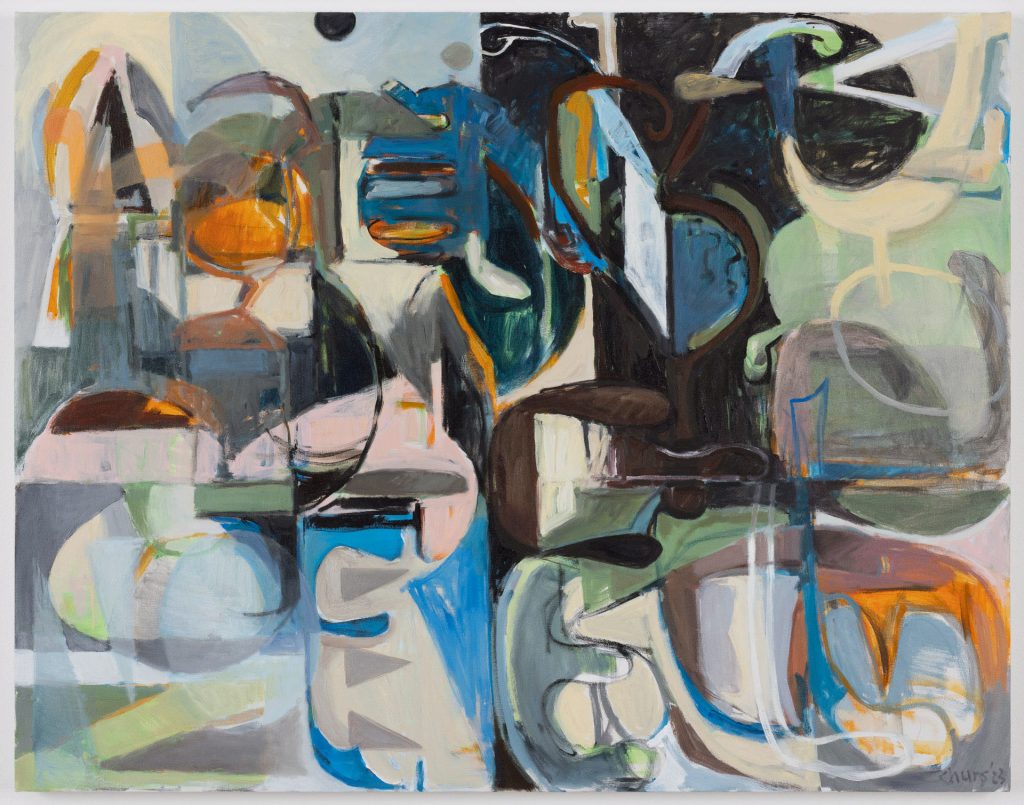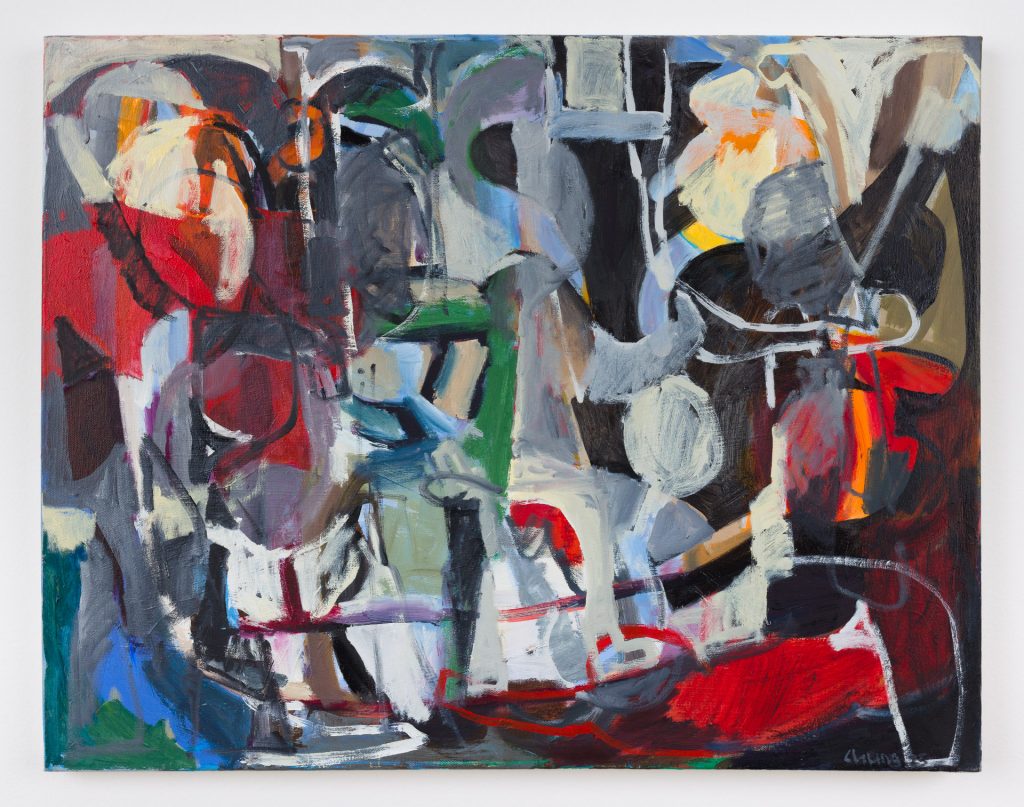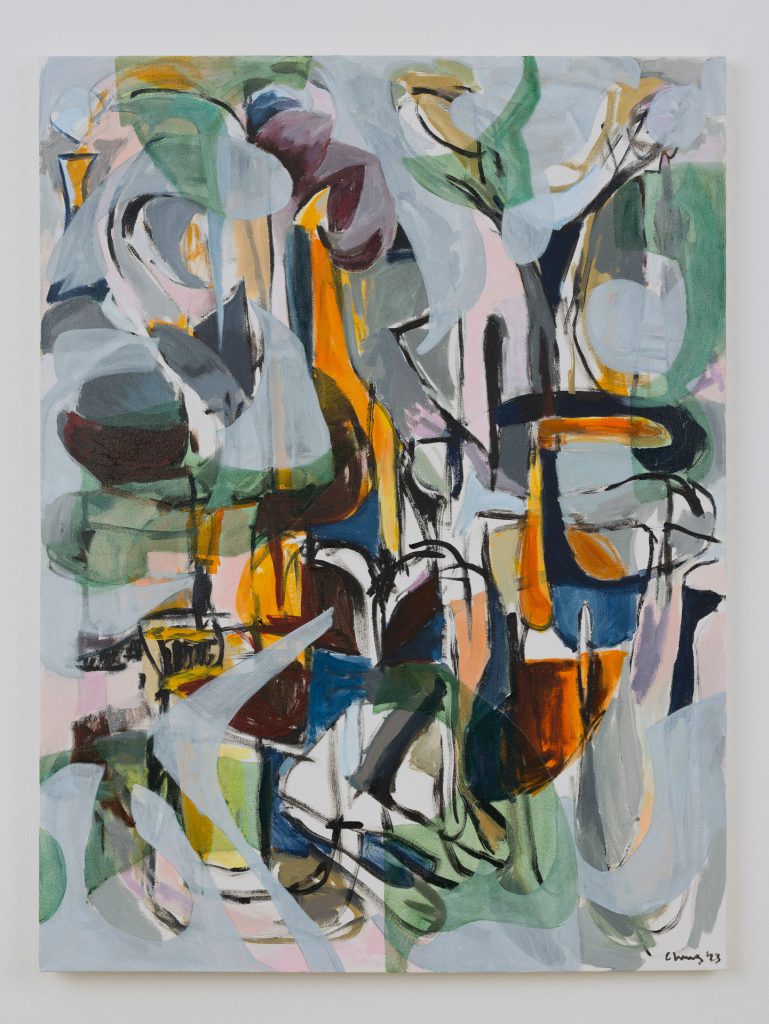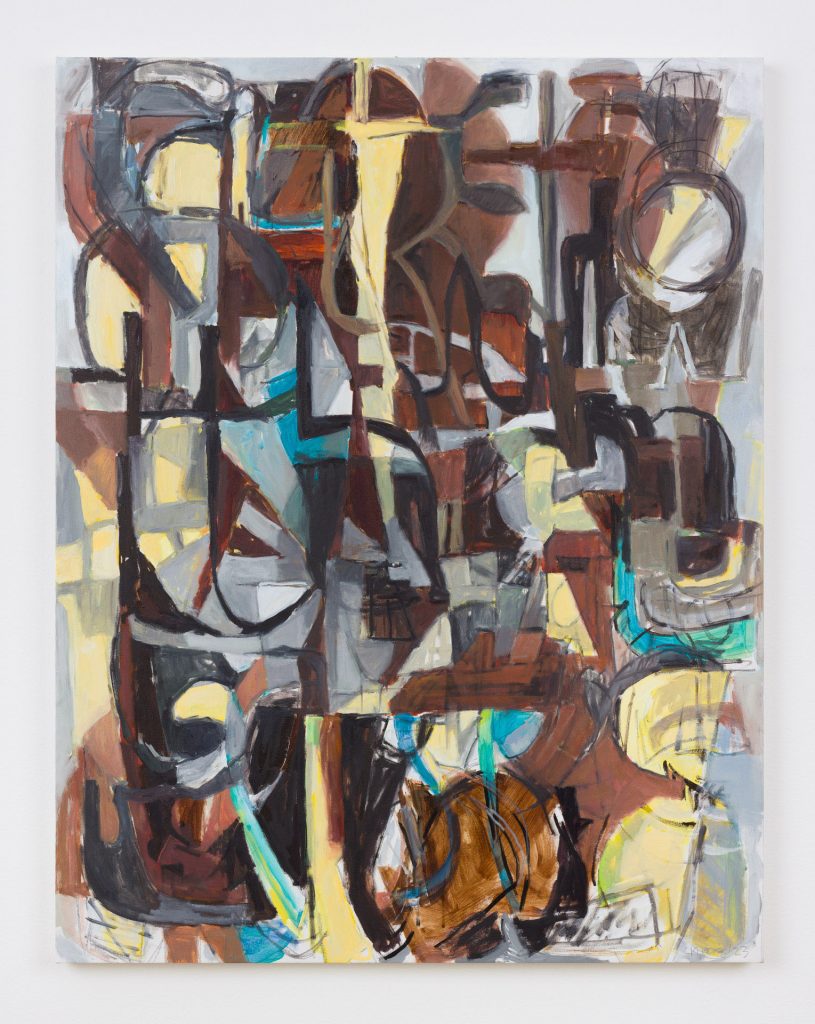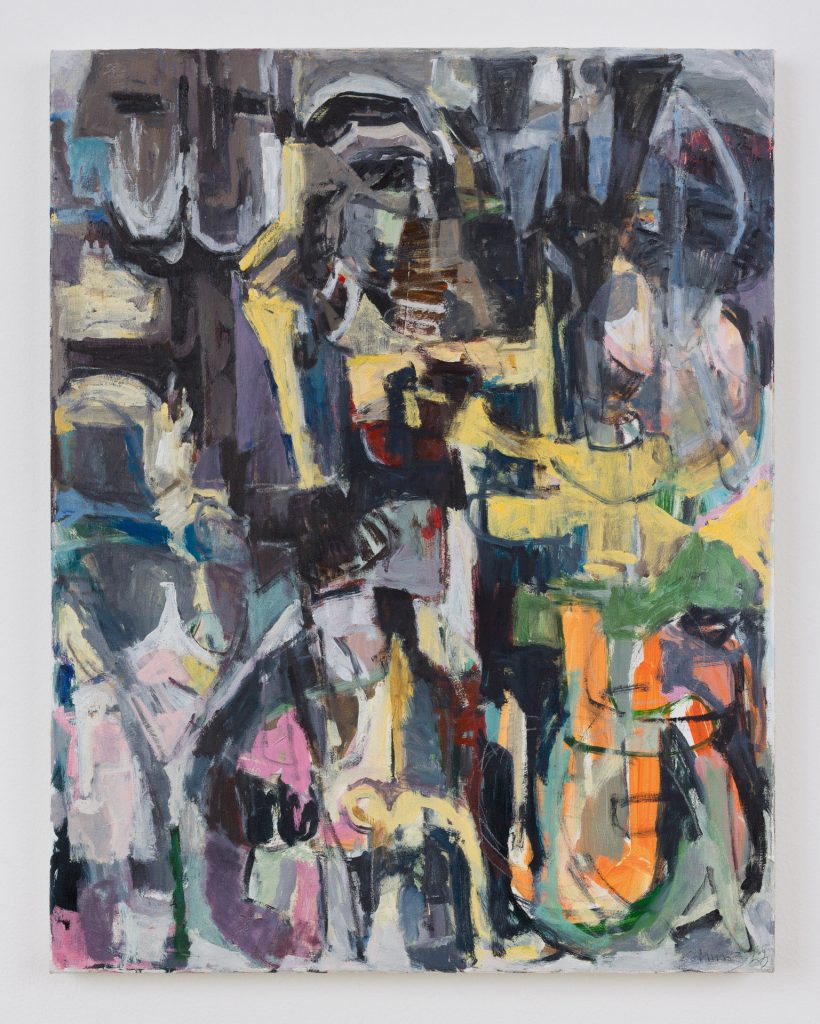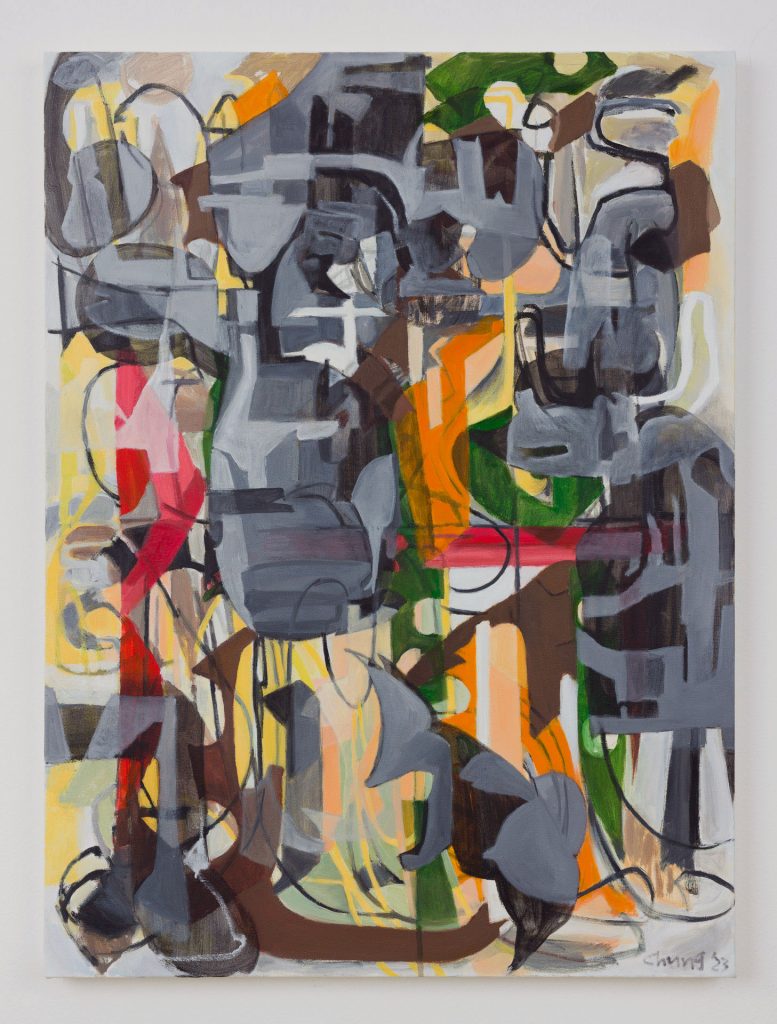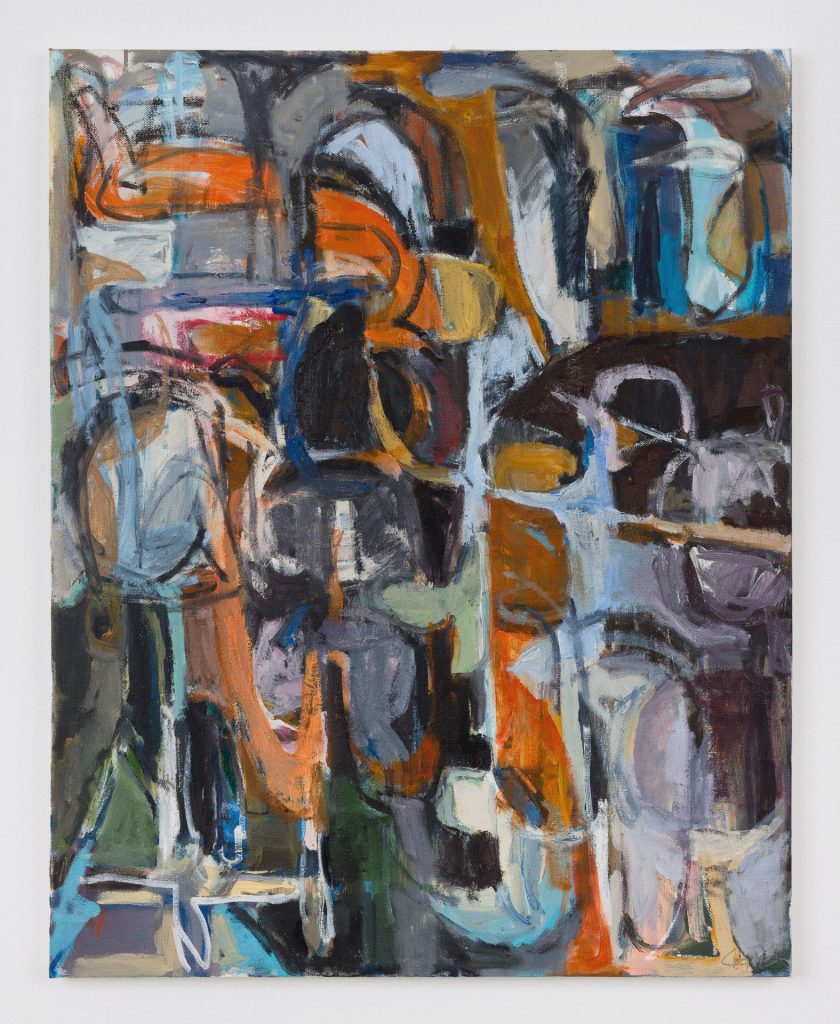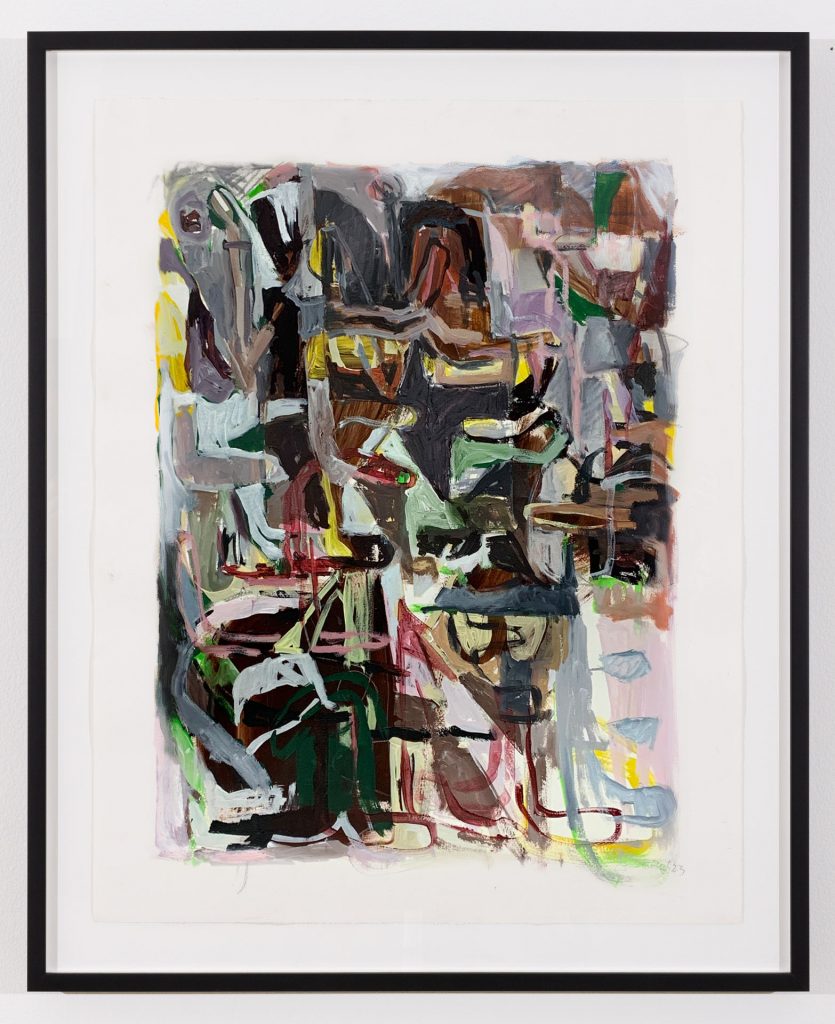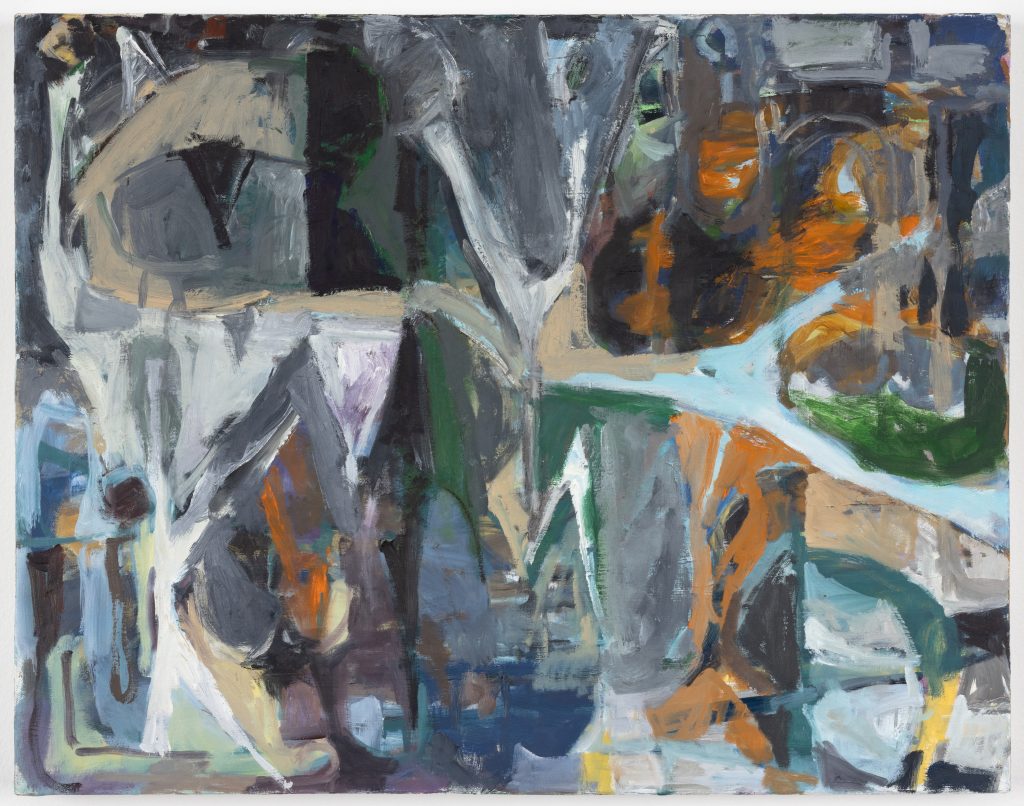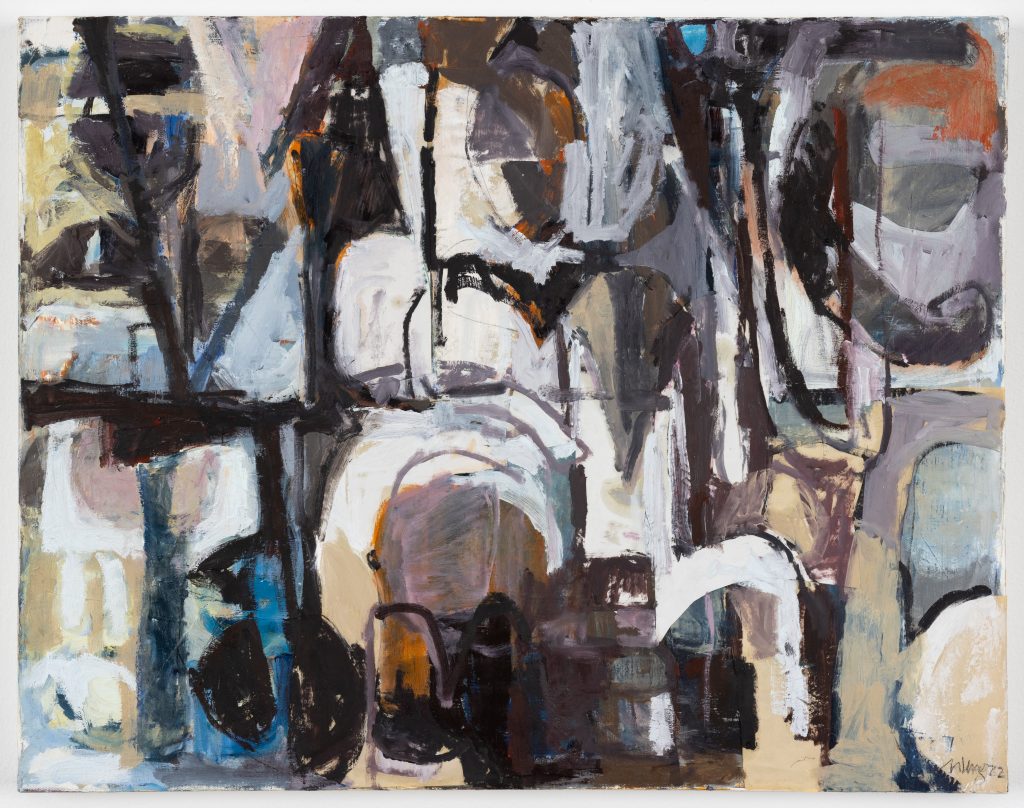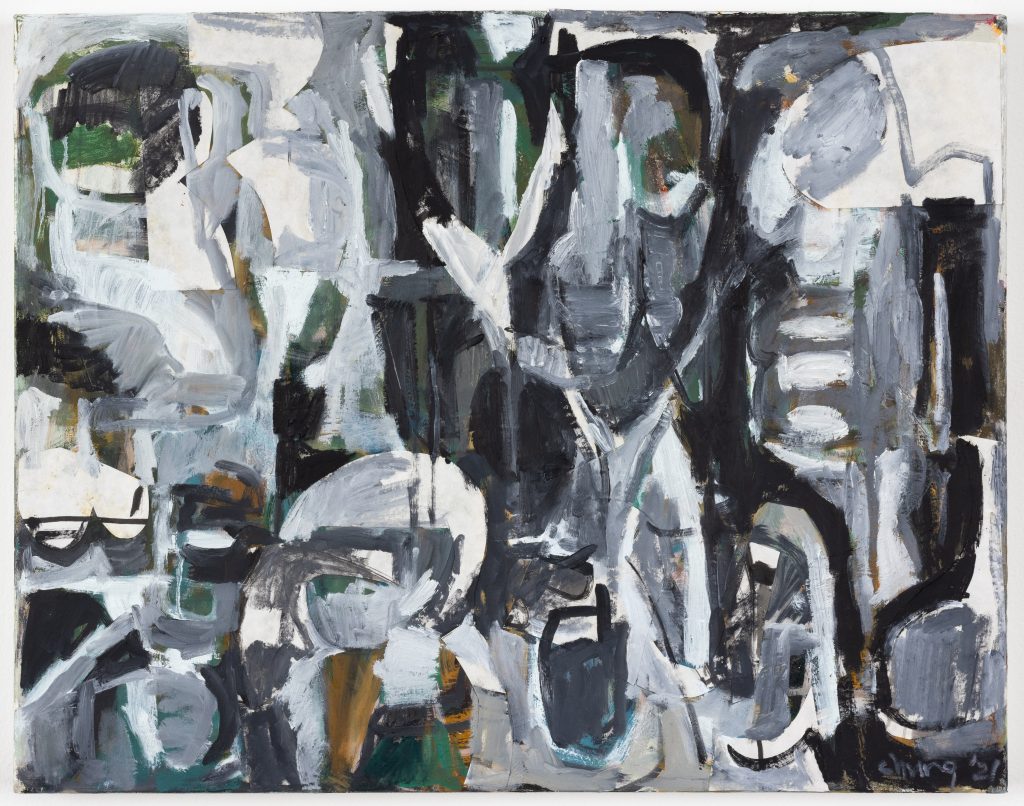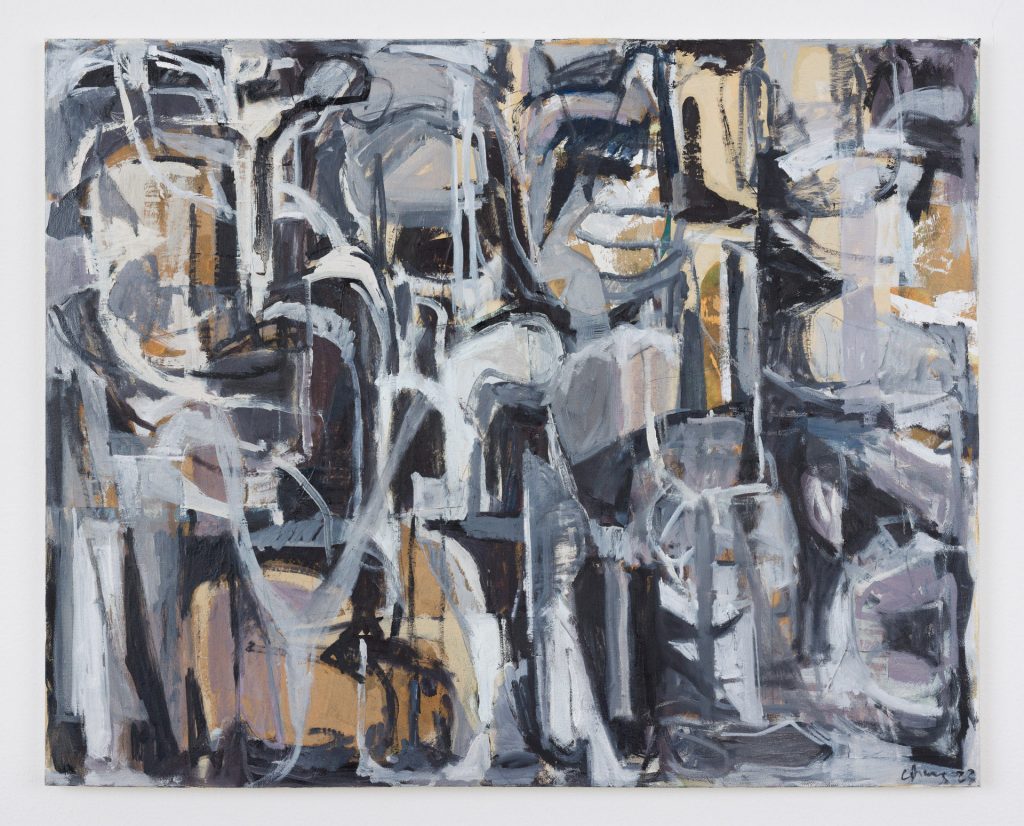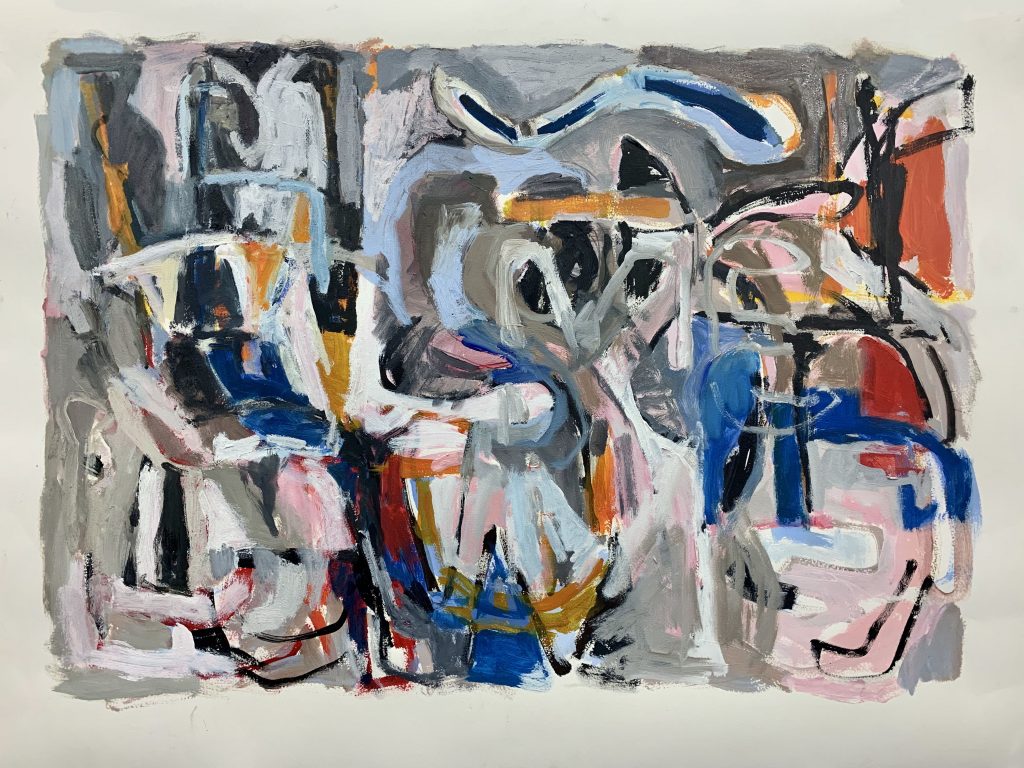Don’t Forget To Remind Me To Forget
The exhibition includes work from an ongoing series of paintings Chung began working on in 2019. While the finished works bear little resemblance to the kinds of word and text paintings not uncommon in contemporary art (the word is less the ‘object’, or more accurately ‘objective’ here, than the thought), viewers should not be surprised if letters and words seem to disentangle themselves from the whole, complicating and notionally unravelling the composition. The artist attributes these words and phrases to “apologies to myself” or (less judgmentally) self-counseling precepts she found herself returning to in the wake of a delayed diagnosis of ADHD (attention deficit hyperactivity disorder) in late 2018. Yet the initial impulse to transform words into images began well before her ADHD diagnosis.
“The idea began to take shape (so to speak) as I began coming across those ‘CAPTCHA’ tests that pop up when websites demand proof you’re not a robot. I always found the shapes of those computer-generated free-style texts amusing. They seemed to be the way babies would write before they could make straight lines or form and scale alphabet letters in consistent sizes to accidentally form words. And then I was also reminded on the poem, “Alphabets” by Seamus Heaney, in which he reminds us how learning alphabets of any language starts with pictures or images first: “ … the forked stick that they call a Y / … A swan’s neck and swan’s back / Make the 2, …,” and so on.
“I started writing down phrases I used to habitually tell myself, ostensibly to be rid of the self-reproach that was on automatic pilot most of my life. These phrases guided the palette, composition and mood for the paintings. Then words and letters were repeated, stretched, overlapped and reshaped, to where they began to function merely as design elements for the image. The words lost some of their emotional charge as they became abstracted during the repetition and reframing; perhaps I discovered a self-help tool (as Beuys had suggested), albeit temporarily.”
The paintings in the exhibition are variously executed in acrylic and oil on canvas, and oil on paper in wide-ranging palettes, some bold and others more muted, in varying degrees of texture and visible layers. Letters—or what might be their rudiments—evolve as much as emerge within compositional spaces of varying density and complexity. Words—or their lexical antecedents (or descendants)—mesh into compositions carrying their own messages at some remove from the deficits and distractions that may been their starting point. A smaller group of slightly more dense and textured works pay tribute to some of her favorite painters—e.g., Brice Marden, Joan Mitchell, and Philip Guston

